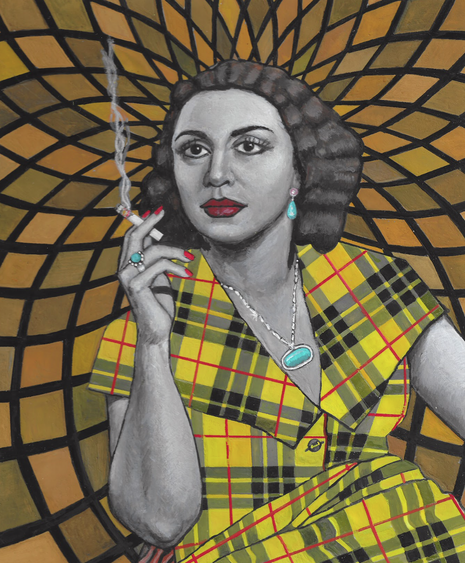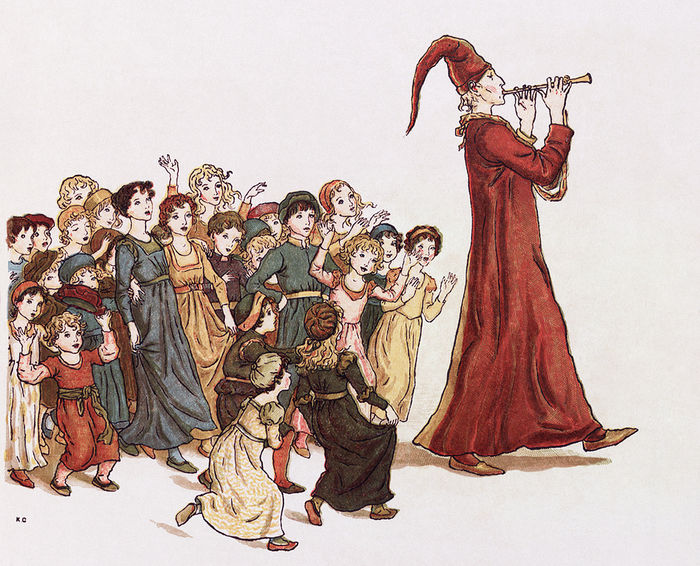Reviving silenced voices: Soheila Sokhanvari’s We Could Be Heroes at the Heong Gallery
Bold, colourful and deeply moving, Sokhanvari’s new Cambridge-based exhibition paints a vivid picture of the socio-political complexities of Iran’s past and present

Addressing visitors on the opening night of her exhibition at the Heong Gallery, Soheila holds up a picture of Armita Garavand, a 16-year-old girl who was hospitalised after being carried out of a train car. She was made unconscious, after she walked into a subway station with her hair uncovered. A year before, Mahsa Amini died in the custody of Iran’s morality police, sparking widespread protests spearheaded by women and girls in defiance of the Islamic Republic. Soheila’s speech is a rallying cry. She details her initial hesitancy to bear the weight of spokesperson, but declares that in the face of the media blackout she feels the need to become a voice: “a voice to these women who have been silenced by this brutal regime.”
“There is an openness to Soheila’s work that encourages empathy, that reaches out and meets us head on”
Soheila’s artwork is timely, yet her subject matter doesn’t stem from the contemporary nationwide protests of women in Iran. Instead, the uncomfortable familiarity in her artwork springs from the stories she tells of pre-revolution popstars and their rebellion against the patriarchy. Strikingly pertinent, Soheila addresses political narratives and the pervasive influence of Western culture in the Middle East. Each photoreal monochrome face has a biography: women such as film actor Zari Khoshkam, who changed her name to continue acting, or filmmaker Kobra Saeedi, who was jailed before being thrust into poverty after protesting the mandatory hijab. In Soheila’s paintings, Iranian feminist icons sing and dance in the spotlight, rarely afforded to them, starkly poised against rapturous backgrounds.
Soheila Sokhanvari is an Iranian-born artist and human rights activist, leaving Iran in 1978, a year before the 1979 revolution, and currently living and working in Cambridge. With the 1979 revolution that transformed Iran into the Islamic Republic of Iran, came the loss of many women's rights. Soheila’s work, however, acts as a celebration of Iranian womanhood, depicting actresses and pop stars who were forced into exile or made to abandon their art after 1979, and whose fates are largely forgotten or untold. Her style is unmistakable: whimsical bold patterns inviting the viewer in to examine the monochrome faces of the women they surround. In the gallery, Kaleidoscopic swirls of black against the white walls carefully frame each painting, a dizzying nod to the seventies spirit that her art exudes. A series of portraits of Iranian men and women gaze back at you: some laugh, others fix you with challenging stares, a few gleam with allure, and silently summon you towards them.
“The women depicted are bold, defiant, and radiant, shining out from a clouded background of bodily politicisation”
A common thread jumps out, and catches the spectator off guard: the subjects sport bold, vibrant clothes in colours that arrest the gaze and are organised into intricate patterns that keep you looking. The loud, proud prints that swathe the garments are, like much of her work, a political statement. In 1979, colours and patterns were removed from men’s clothing as new masculine ideals were enforced. And as one of the slogans of the 1979 revolution was “death to the unveiled”, women were required to wear hijabs for the first time. And yet the women depicted here are bold, defiant, and radiant, shining out from a clouded background of bodily politicisation.

In A Beautiful Idol, the famous singer Ezat Roohkbaksh leans across the canvas, cigarette wielded jauntily between fingers tipped with red polish. Her career launched in the 1940s and was prolific; she performed nearly 400 songs. After the Islamic Revolution forbade women to sing in public in front of mixed audiences, Ezat retired, dying in near-anonymity a decade later. The startling aquamarine of her jewellery clashes with her yellow, black and red plaid dress – positively Clueless-esque – which in turn clashes with the earthy patterned background behind her. She is undeniably magnetic; one can imagine her stubbing out her cigarette and rising up to croon over a nearby microphone. The unapologetic boldness of her plaid print – venom bright – reminds us that clothes are important, defining, dangerous.

Yet even before the revolution of 1979, the policing of clothing is woven tightly throughout Iran’s twentieth century history, something Soheila doesn’t let us forget. Daphne is a young woman whose gaze looks out somewhere above the viewer, the subject of a 1930s studio photograph stumbled across by the artist. Daphne exudes old-school sensuality; her hair is coiffed into polished waves around her neck, a chunky silver necklace balances across her collarbones and leads the gaze towards an exposed breast. Leaves sprout from her shoulders and glossy hair, curling out towards the frame in a makeshift crown. The title is a reference to the Greek myth: the nymph Daphne transforms into a laurel tree to avoid the unwelcome advances of the god Apollo. Perhaps protectively, the subject wraps a stole around her shoulders, warm patterned fur against the pink pop of her sleeve. The original photograph was taken after the introduction of the ‘unveiling’ law, banning Iranian women from wearing veils in public. This was the first legislation of female dress, a politicisation of clothing that resulted in the subsequent enforcement of mandatory veiling by Islamic revolutionary authorities after they seized power. Don’t be fooled by the boldness of Daphne’s uplifted chin and curled lip – the laurel leaves betray her body’s desire to avoid the unwanted scrutiny of the male gaze.
Drifting around the room, Soheila’s portraits transport us back to a time we have never known, yet one that becomes oddly familiar; smiling pop stars of the past morph into celebrities of the present day, her family members shift into our own. There is an openness to Soheila’s work that encourages empathy, that reaches out and meets us head on. And yet the sweetness of familiarity sours when jolting oneself back into the present. The paintings gaze at us, pre-1979 Revolution, and are unaware of what is coming. Their smiles and patterns are hopeful, expectant, heartbreaking.
If Soheila’s muses are political, her materials are all the more so. The tools she uses complement the stories she tells – epitomised by a series of crude oil paintings recreating family portraits. Crude oil lends itself well to painting family memories: the sepia tone evokes faded historical photographs. Beyond this, the medium alludes to the entrenchment of the oil industry in every aspect of Iranian life since its discovery in 1908, even penetrating familial relationships and social networks. This becomes ever more compelling as we discover that this ‘paint’ was sourced from an oil refinery in Shiraz, Soheila’s birthplace. In other pieces Soheila employs egg tempera painted onto calf vellum, a traditional Persian technique, to create bold Western-style 70s patterns. Creating Westernised patterns using a traditional medium reflects a major theme in Soheila’s work: the hardship of women who were beguiled by Western culture, but who could not enjoy Western liberties.
Emotional, and feeling thoroughly out of our depth, we shuffle up to her to express our admiration for her art and her courage. She is warm, gentle, strong, and tells us how much that means to her. “We are women in this together,” she says. This is a fight for women’s rights, but it is far from necessary to be female to be heartstruck by her art, which pulses with raw anger at the brutality of an authoritarian regime, and is laced with hope for better times ahead. We could be heroes, the exhibition reminds us. And Soheila is, her art a vibrant shout of defiance, a kaleidoscopic call for action.
We Could Be Heroes will remain on display at the Heong Gallery, Downing College, until 4 February.
 Music / The pipes are calling: the life of a Cambridge Organ Scholar25 April 2025
Music / The pipes are calling: the life of a Cambridge Organ Scholar25 April 2025 Arts / Plays and playing truant: Stephen Fry’s Cambridge25 April 2025
Arts / Plays and playing truant: Stephen Fry’s Cambridge25 April 2025 Comment / Cambridge builds up the housing crisis25 April 2025
Comment / Cambridge builds up the housing crisis25 April 2025 Interviews / Dr Ally Louks on going viral for all the wrong reasons25 April 2025
Interviews / Dr Ally Louks on going viral for all the wrong reasons25 April 2025 News / Candidates clash over Chancellorship25 April 2025
News / Candidates clash over Chancellorship25 April 2025






